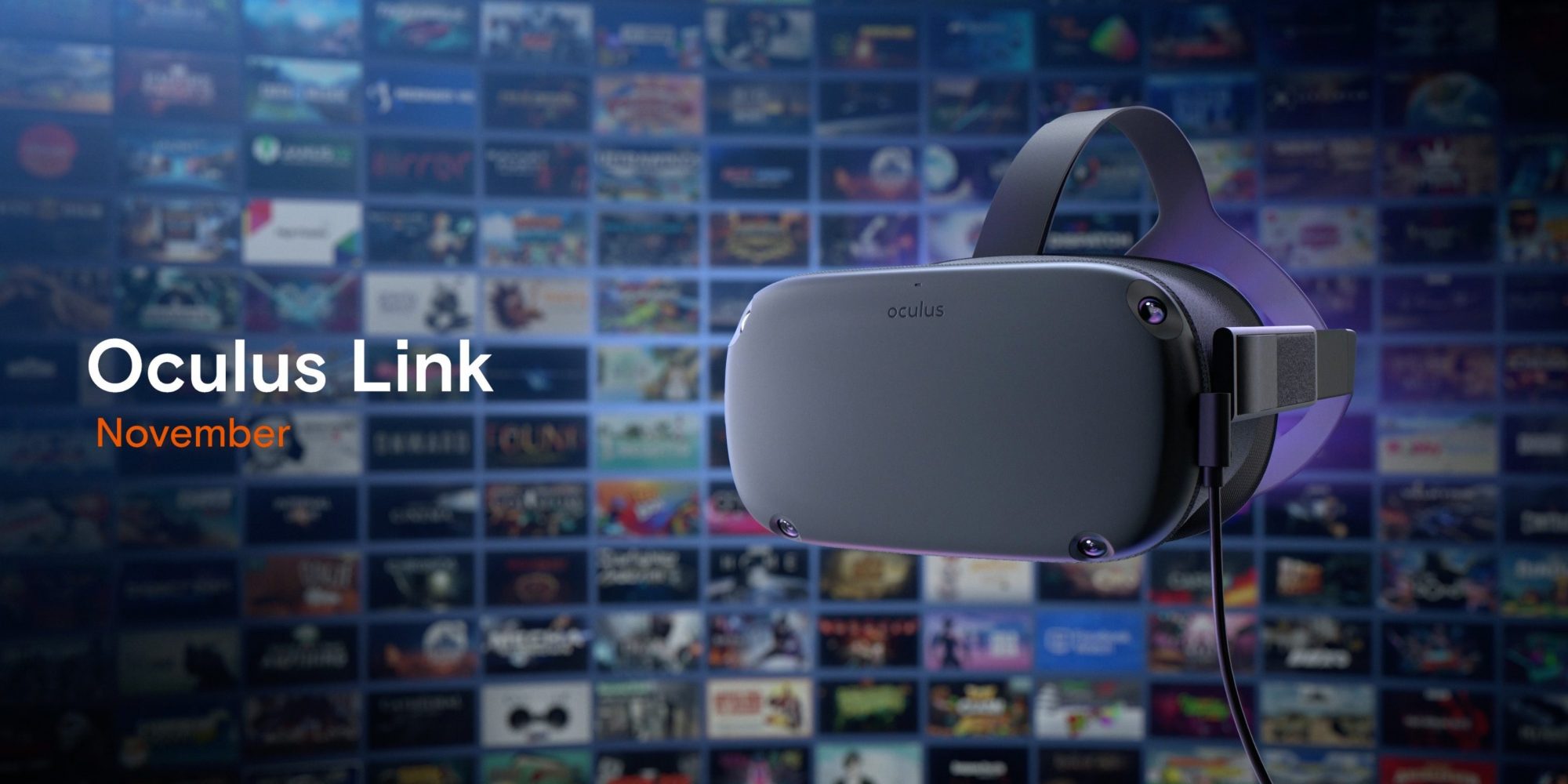Quest PC Connection Oculus Link Beta Software and Cable Specs Now Available
Though no official sales figures have been released yet, there are reasons to believe that the Oculus Quest headset has been a massive hit with end users. Its success has eclipsed even that of PC-based Oculus Rift S headset that was released at the same time as the Quest headset.

The Quest headset is about to get even more versatile as Facebook has today released the recently announced Oculus Link PC connection for the Quest headset. Oculus Link enables owners to plug their standalone Quest headsets into their gaming PCs so as to access and play and Rift games and it is now available in beta.
The cordless Quest headset is an impressive piece of VR hardware but it relies on a smartphone chip and on its own, it is still not as powerful as its PC-powered Rift S counterpart. However, by using the Oculus Link connection to plug the headset to a VR-ready PC, the standalone headset can be configured to run more powerful virtual reality experiences than would have been possible if it were run as a standalone headset should the Link connection function as promised.
The release of the Oculus Link beta software is a massive boost for the standalone headset. The cable specs will widen the appeal of the virtual reality headset allowing end users to purchase a single virtual reality headset for both standalone and PC-based virtual reality experiences.
In its support page, Oculus states that users will need a “high-quality” USB 3 cable as well as a VR-ready PC that meets the minimum requirements to run the Oculus Link. The minimum specs should be the same as those for the Oculus Rift S headset with an Intel i5-4590 or an AMD Ryzen 5 1500x processor or better. If you already have the supporting hardware that meets the recommended or minimum technical specifications, you only need to download the latest Oculus PC app to get started.
However, there is a caveat to the deployment of the Oculus Link connection as it does not support a large number of graphics cards like the Oculus Rift S so that will pose a challenge to users. Currently, Oculus Link only supports some NVIDIA GPUs. It does not provide support for AMD GPUs (AMD 300, 400, 500, 5000 as well as the Vega series). Oculus has, however, assured users that it is in the process of working with AMD in order to incorporate support for “as many of their cards as possible”. Oculus is planning to incorporate support for additional GPUs by the time Oculus Link will be out of the beta.
Oculus Link will only support a small number of the higher end NVIDIA graphics cards including the Titan X, GTX 1070, GTX 1080, GTX 16-series and the RTX-20 series. It does not provide support for the GTX 970, 1060 and the 1060M processors.
The good news for Quest users is that Oculus Link is a fairly cheap add-on. According to the company, “most high-quality USB 3 cables” will be compatible and should work seamlessly to transfer data between the VR-ready PC and the headset. Unfortunately, USB 2-based cables which currently ship with the Quest headset are not compatible for Oculus Link so you will have to purchase a USB 3-based cable.
Oculus is also planning a 16-foot fiber-optic cable in some select regions which has been slated to arrive “later this year”. There are less than 6 weeks left before the end of the year so the Oculus Link cables should be arriving soon if it sticks to its promise. However, the company says that a sub-$15 Anker cable should still suffice and deliver great results to users who wish to try out the Oculus Link experience in the beta period.
Following the release of the specifications, developers that wish to create their own Oculus Link cables now have the specs to run with: a 5-meter cable of USB 3.2 Gen 1 Type-C that has straight and right-angle USB-C connectors, 3-Amp power and which supports 5Gbps of bandwidth. Oculus has also specified high-quality spiral shielding, a 20mm cable bend radius as well as low-friction 0.5mm flexible TPU coating.
The free Oculus Link beta software is also finally available. Your Quest must be running a 11.0 or higher version of firmware. The Oculus PC app will require a 1.44 or higher version of firmware.
If both releases have been installed and the Quest headset has been connected to a PC via USB 3, owners will gain access to a Link-specific “remote rendering feature” when they select “Enable Oculus Link (cable)”.
Facebook wants to have the Oculus Link hardware requirements that will match those of the Rift and Rift S in the beta period. The Oculus Link’s recommended PC specifications are similar to those of Rift S.
Oculus Link was first announced during the Oculus Connect 6 in September this year when it was promised that it would be released by November. The specific date and compatibility weren’t released then. The cabled option was announced after third-party experiments with wireless PC streaming to Oculus Quest headset. The experiments had been mostly successful though they failed to preserve the full visual fidelity then. The officially-sanctioned of the cabled solution offers a much better performance.
https://virtualrealitytimes.com/2019/11/19/quest-pc-connection-oculus-link-beta-software-and-cable-specs-now-available/https://virtualrealitytimes.com/wp-content/uploads/2019/11/Oculus-Link-Launched-600x300.jpghttps://virtualrealitytimes.com/wp-content/uploads/2019/11/Oculus-Link-Launched-150x90.jpgTechnologyThough no official sales figures have been released yet, there are reasons to believe that the Oculus Quest headset has been a massive hit with end users. Its success has eclipsed even that of PC-based Oculus Rift S headset that was released at the same time as the Quest...Sam OchanjiSam Ochanji[email protected]EditorVirtual Reality Times - Metaverse & VR
